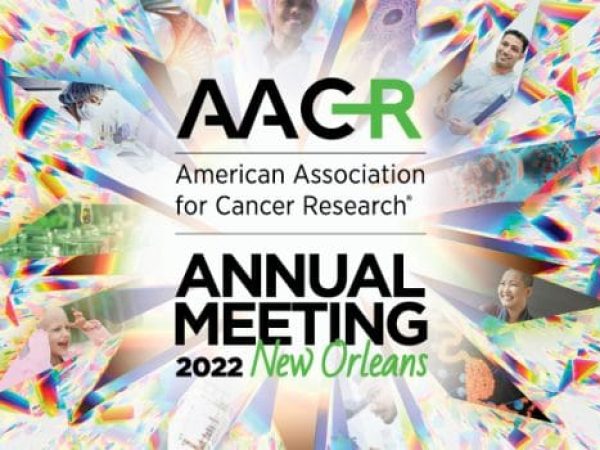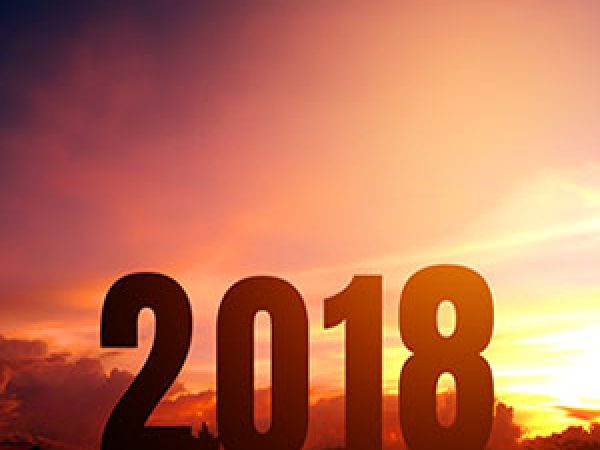How to Effectively Reach People with Your Science?
If you are a cancer researcher, what is your first reaction when someone asks you, “What are you researching on?”
Do you easily explain your work in simple language, sprinkling in analogies and fun facts? Or do you pause, wondering where to start and what to say?
As brilliant as researchers are, many find it daunting to communicate their science in an easily understood form, thus often shutting themselves and their discoveries off from the public and instead sharing them only among their peers.
It is crucial, however, that the public understands the latest scientific advances so they can make informed decisions—about risk reduction or a treatment, for example—based on accurate information. The non-scientific community is also more likely to appreciate, support, trust, and consume valuable public health tools if they understand the impact.
A very recent experience serves as a stark reminder of why we should seriously consider bridging the gap between scientists and the public: Researchers from across a multitude of fields came together in an unprecedented manner, worked incessantly, and harnessed a fantastic new technology to develop an effective vaccine in record time in 2020 against one of the biggest threats against humanity in recent history—the COVID-19 pandemic. A great number of the American public, however, downright rejected this invaluable prevention tool against a deadly disease that has taken the lives of more than a million Americans to date, mostly out of suspicion, misinformation, and distrust.
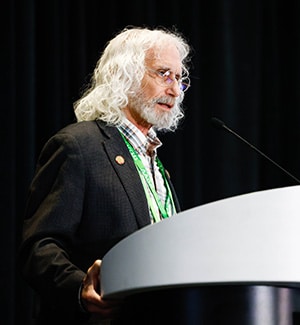
Appalled by some of the public’s response to the vaccine rollout, AACR Past President Philip D. Greenberg, MD, FAACR, felt it is time we did something about this. He discerned the disconnect between scientists’ intentions and the public’s perception is due to poor communication.
“We have been insulated in doing our research with passion, much of it with altruistic intentions, but what we have done a very poor job of is communicating to the public why we do it, why we’re passionate about it, and [how] what we’re doing can impact their lives in a way that will make it better,” said Greenberg. “It became a situation where it seemed as if doing science is more an entitlement than service.”
Greenberg, who is also Rona Jaffe Foundation Endowed Chair and Professor and Head of the Program in Immunology at Fred Hutchinson Cancer Research Center, took the first step in addressing this issue and initiated the development of a special session at the AACR Annual Meeting 2024 titled, “Strategies to Effectively Communicate Science to the Public.” In this session, Greenberg and a panel of experts discussed the importance of breaking the barriers between the scientists and the public to a room full of attendees. This session is the first in a series of AACR educational opportunities to come on this topic.
The panelists, with robust audience participation, focused on the key aspects of science communication—why is it important to communicate science to the public, how to communicate, and how to improve our efforts, overall, in getting through to the public.
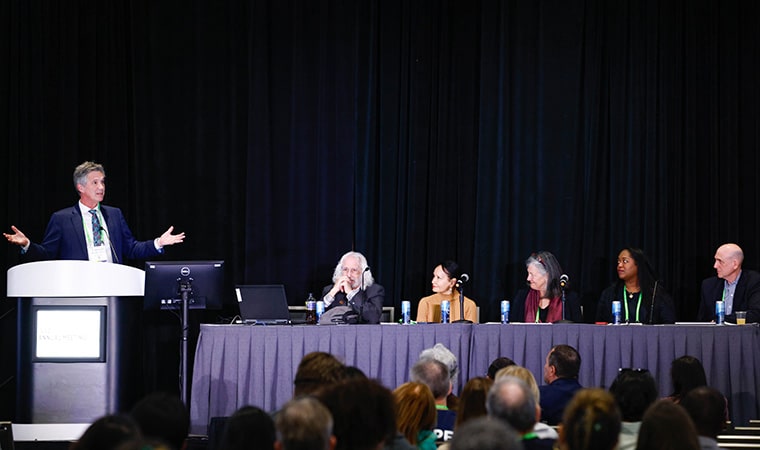
Moderator of the session William G. Nelson, MD, PhD, Editor-in-Chief of Cancer Today, AACR’s magazine for cancer patients and their families, opened the discussion by talking about the importance of knowing your audience.
“You all are already science communicators and you’re very good at it—you don’t realize this incredible reservoir of capability you have,” he said, pointing to the skepticism scientists address on a day-to-day basis in a methodical fashion, whether they are publishing a manuscript or obtaining grant funding. He underscored that it is just a matter of tailoring the information in a format that is suitable for the audience they seek to reach.
“Don’t use jargon,” he said. “You need to get your message across quickly.” He talked about the value of being in a teaching mode to deliver the information so anyone, coming from any background, can understand the message and make the best decisions to take care of their own health.
Nelson, who is director of Sidney Kimmel Comprehensive Cancer Center at Johns Hopkins, is also a proponent of using interesting facts to engage the audience and get them excited about science.
Telling a Story
One common theme that Nelson and all the panelists converged on, telling a story.
Lisa A. Newman, MD, MPH, member of the AACR Cancer Disparities Progress Report 2022 Steering Committee, talked about communicating science to diverse communities. Drawing attention to the cancer disparities that continue to exist for Black individuals across the globe, Newman stressed the importance of reaching patients where they are and interacting with them through outreach efforts and advocacy.
“It does have to be a continuous dialogue,” said Newman, who is also chief of the Section of Breast Surgery, New York-Presbyterian/Weill Cornell Medical Center. “The constant investment of our time and energy in diverse communities is essential.”
Mary C. Beckerle, PhD, FAACR, member of the AACR Science Policy and Government Affairs (SPGA) Committee, shared her views on communicating the importance of biomedical research to policy makers.
Beckerle, who is a professor of Biology and chief executive officer and Director of Huntsman Cancer Institute, provided specific examples from her personal experiences—getting new legislations passed in Utah about radon, tanning beds, and Medicaid expansion, among others—of how being able to tailor the message to meet the needs of the person you’re trying to reach and learning to pivot are vital to getting the message across.
“You have to build trusted relationships before you put them to work,” she said, emphasizing the importance of human touch and being truthful. “You need to deliver a tailored message that resonates.”
Beckerle cited a Native American proverb: “Tell me the facts and I’ll learn; Tell me the truth and I’ll believe; But tell me a story and that will live in my heart.”
Bianca Islam, MD, PhD, a scientist mentor of the AACR Scientist↔Survivor Program (SSP) shared her perspectives, not only as a member of the SSP, but also as an early-career scientist. Islam, a gastroenterology research fellow at Case Western Reserve University/University Hospitals Cleveland Medical Center, emphasized the newer ways of communication that younger generations engage in, such as social media.
Islam also pointed to a very important aspect of communicating with patients and advocates—listening to them. She highlighted the different ways physicians can be focused on being patient centric, including by engaging in a conversation with patients that educates them about their disease and the outcomes and helps them make informed decisions.
Islam elaborated on the tenets of communication, including clarity, building trust and rapport, promoting health literacy, and continued engagement and support, among others. “The same tenets apply to whomever you are speaking with,” she said, whether they are patients, legislators, or the general public.
Clifton Leaf, MFA, adjunct professor of journalism at Columbia University School of Journalism and former editor-in-chief of FORTUNE, talked about how hype and “grade inflation” of scientific discoveries lead to skepticism among the public. Leaf, who is also a global fellow at Ellison Institute of Technology, showed an example of how more than two dozen articles calling a research advance a “cancer breakthrough” had already appeared among just a handful of prominent news outlets in 2024.
He emphasized the importance of placing a scientific advancement in proper context and being clear and truthful about the timespan at which point that discovery will become meaningful for a patient.
“When day-to-day progress against cancer is put in the right context, each new advance is more meaningful,” he said. “And each genuine breakthrough—and there have been many so far—will be causes for celebration.”
Engaging in Bi-directional Communication
A lively panel discussion with audience participation tackled a number of important subjects, including finding optimal approaches to communicating about cancer risk factors that may be beyond one’s control, and communicating science with our family members, a friend, a young niece who is a potential future legislator, a neighbor, “or our dear aunt and uncle who are beloved but flirting with a conspiracy theory.” Quite often in such instances, it is a continuous dialogue that involves both talking and listening, and a commitment to continuing the conversation.
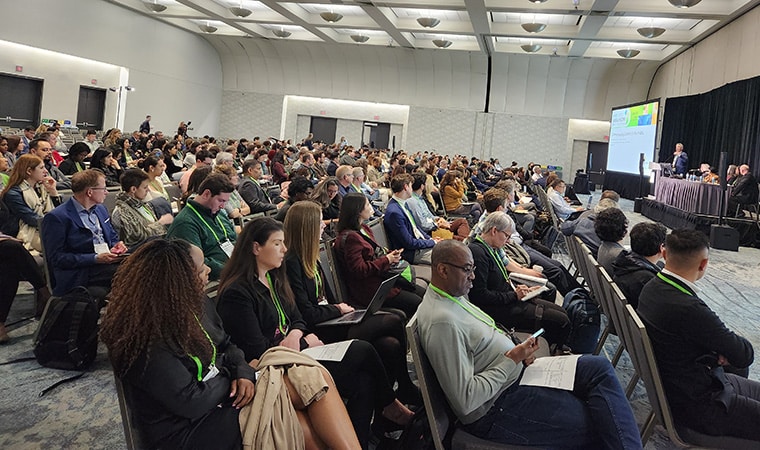
“We should think in terms of bi-directional communication,” noted Wiliam S. Dalton, PhD, MD, from the audience, reiterating the importance of engaging the public and telling a story.
Developing bi-directional communication platforms to engage underserved populations and improve diversity in clinical trials is a priority for the AACR Trust in Science Task Force, chaired by Dalton, who is also a founder and chief executive officer of M2Gen, and director of DeBartolo Family Personalized Medicine Institute at Moffitt Cancer Center. The overarching goal of the Task Force is to improve cancer research and care by developing policies and practices that promote societal trust in science and cultivate diversity as an ethos of the AACR.
Audience engagement at the special session also revolved around the need for making communication with the public a priority in academic institutions by rewarding young investigators who participate in such endeavors and not just placing emphasis on publishing peer-reviewed scientific articles and obtaining grant funding.
Members of the audience also suggested innovative ways to communicate science, such as combining education with entertainment and sharing science as a 10-minute presentation at scientific conferences.
Referring to scientists mostly focused on discussing science only with other scientists, Greenberg noted, “We know how to talk to each other well, but we don’t have an adequate sense of how to talk to others.” He said, “We have to not only learn how to talk, we need to learn how to listen well; we need to ask questions and get feedback from those [different] groups so we understand what is it that we said that they understood and also what we didn’t say that they want to hear about.
“It is not going to happen overnight—it is a long process, but when we are committed to succeeding, we will succeed.”
Watch the Session
The session above, “Strategies to Effectively Communicate Science to the Public,” and the forum, “Can Trust in Science Help Us Decrease Cancer Health Care Disparities and Increase Clinical Trials Participation?” are also available on the virtual meeting platform for registered Annual Meeting participants through July 10, 2024.

